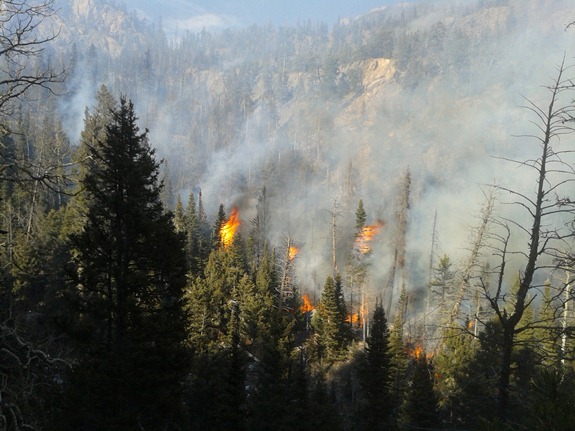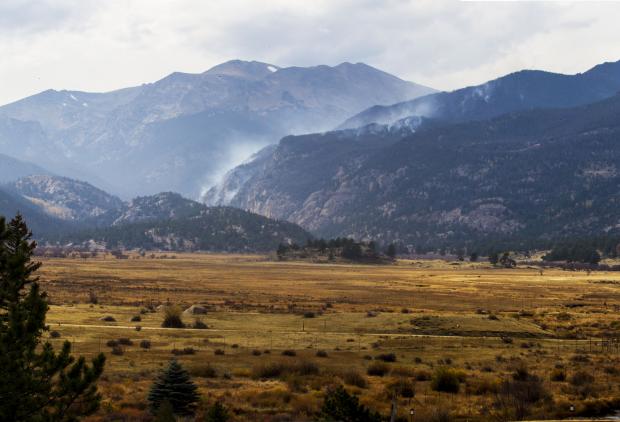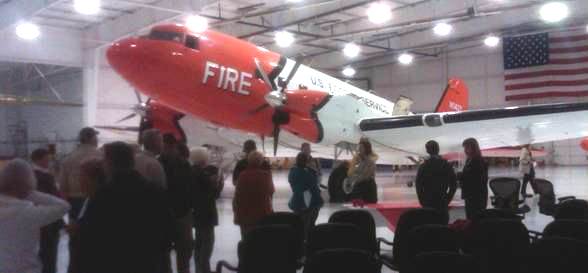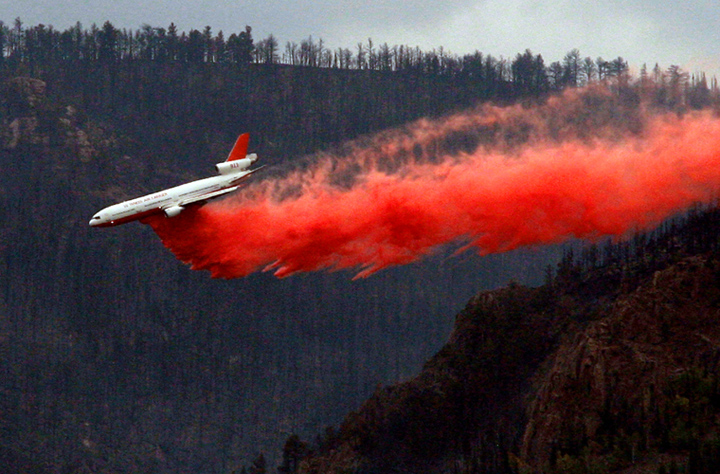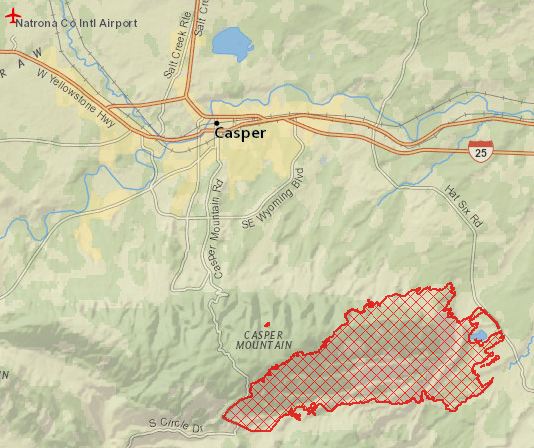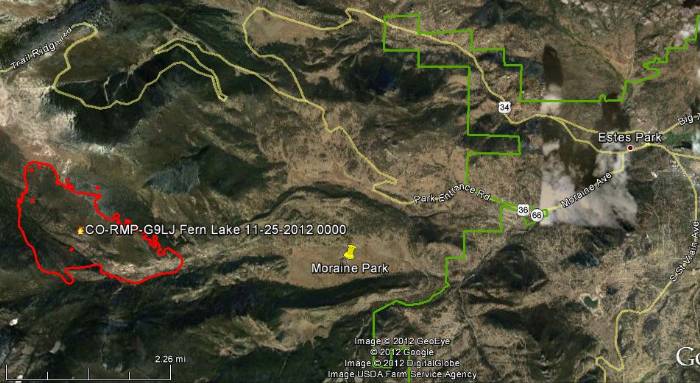
Updated at 4:56 p.m. MT, December 1, 2012
At 1:50 a.m. on Saturday campers in the Moraine Park Campground four miles west of downtown Estes Park, Colorado were roused from their sleep and ordered to evacuate, forced out by the Fern Lake Fire in Rocky Mountain National Park. Strong winds early Saturday morning of 25 to 45 mph gusting to 75 mph pushed the fire approximately three miles east into Moraine Park, just south of the campground. Firefighters were able to prevent it from crossing Bear Lake Road.
According to the Larimer County Sheriff’s Office evacuations were ordered for the Highway 66 area and other locations east of Moraine Park. The Sheriff’s web site reported that those needing information about evacuations to call 970-577-3716. That number is subject to change. Additional information regarding evacuations can be found at InciWeb.
One structure burned on Saturday, a privately owned cabin inside the park boundary. No land outside the park has burned.
The fire has been burning since October 9, and following the expansion Saturday morning it was mapped at 4,400 acres. Due to the steep terrain and hazardous trees, firefighters have only been able to attack the fire in areas that provide an adequate margin of safety. A Type 3 medium-sized helicopter was able to complete a recon flight on Saturday, but the strong winds prevented the large Type 1 Skycrane helicopter on scene from working on the fire. Two additional Type 1 helicopters have been ordered, a K-MAX and another Skycrane.
The map of the Fern Lake Fire above shows the last Google Earth perimeter of the fire that has been made available by the National Park Service. A more recent map dated November 30, 2012 showing virtually the same perimeter before the lastest fire movement can be found at InciWeb.
By mid-day on Saturday the winds decreased, slowing the fire, which allowed some residents to return to their homes in the High Drive and Marys Lake Road areas.
On order are a Type 1 Incident Management Team, hot shot crews, additional engines, two additional Type 1 helicopters, and “all available local resources”, according to the fire’s InciWeb site. Structure protection is being provided by many local fire departments. Tracy Weaver, a spokesperson for the fire, told Wildfire Today that two large air tankers were ordered early Saturday morning but they were told the only air tankers still on contract were in southern California and they were grounded, unable to take off due to weather.
In recent days, the Incident Commander has been Jerran Flinders, a smokejumper from Boise, Idaho. One or two squads of jumpers have been assigned to the fire for the last week or two.
Saturday morning the National Weather Service issued a hazardous weather outlook that warned of winds in the area gusting up to 50 mph in the morning, decreasing to peak gusts of 30 mph in the afternoon. Temperatures will continue to be unseasonably warm. The forecast for the specific area of the fire calls for 49 degrees on Saturday with a minimum relative humidity of 38 percent. On Sunday the high will be 50 degrees, the relative humidity will bottom out at 23 percent, and the winds should be out of the west-southwest at 16 mph gusting to 26. There is virtually no chance of rain until Sunday night, when there is a 15 percent chance.
We are working on obtaining additional information on the fire and expect to update this article later on Saturday.



